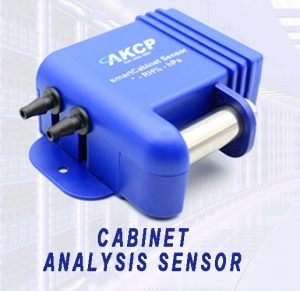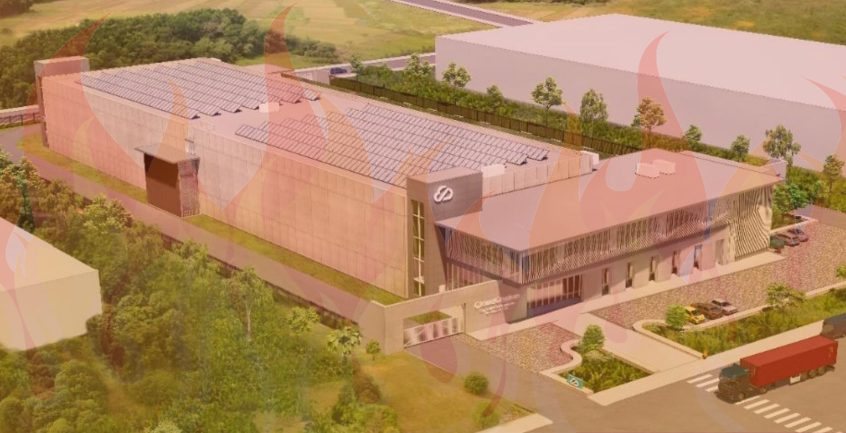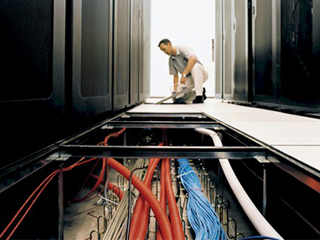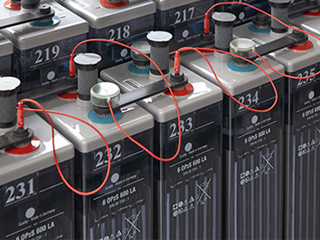California’s overworked electrical grid was worn out by heat waves on Labor Day, knocking out one of Twitter’s key data centers in Sacramento.
To keep its platform operational, Twitter relied on its other data centers in Atlanta, Portland, and Oregon during the outage on September 5th. Additionally, a business executive reportedly warned that some users might not be able to use Twitter if another center went down.
Sacramento’s all-time high temperature that day of 114 degrees Fahrenheit was immediately overthrown just that same afternoon. A sizzling 116 degrees temperature was recorded on the city’s thermometers.
Data centers are essential to the internet operations of tech businesses like Google, Meta, and Twitter. These data centers need to run on enormous loads of power, which produces a lot of heat, thus a cooling system is needed to keep everything operating.
What Does The Twitter Outage Mean In The Industry?

Photo credit: datacenterdynamics.com
The planet continues to heat up due to climate change. Twitter’s outage just proved how extreme weather conditions can damage an online system that billions of people worldwide rely on every day.
Some U.S.-based businesses are trying to resolve this problem by setting up data centers in countries with colder temperatures. For instance, just recently, Google constructed a data center in Finland.
Similar Outages With Other Companies
Just last month, the United Kingdom was also scorched by heat waves that set records. Oracle‘s cloud-based system and Google Cloud data centers in London were rendered inoperational. This resulted in customers being unable to access internet services for almost a full day as a result.
-
How To Protect Data Centers Efficiently
Heatwaves are disastrous to business as we have seen this week when the two major data center service providers faced a service outage for long hours. There are health concerns too, which lead to reduced office productivity, as employees cannot perform effectively.
Also, there are risks of power outages as power grids are overloaded resulting in server failure, storage system crashes, and subsequent data disruption or even loss. These are issues that can have a great impact on the business. This calls for business organizations to constantly monitor their facilities and protect them against issues that may be brought about by heat waves. Among the elements to monitor during a heatwave are temperature, power outages, and humidity.
-
Temperature Rise In Data Centers
For data centers to operate optimally, they must be kept at the right temperatures at all times. They may be designed to withstand extreme heating, only for a short period, but record-breaking temperatures like those being experienced during the heat waves cause great strain on the cooling systems and therefore on the data center operation. The situation has been made worse by the energy crisis that the United Kingdom and other parts of the world are experiencing. Keeping the data center servers cool is now one of the hardest tasks. Business organizations have a herculean task trying to keep the IT infrastructure cool especially when the temperatures have risen to abnormal levels.
However, not all data centers are struggling during the heat waves. New data centers have taken into consideration the issues that may be brought about by climate change. A situation that we will continue to experience in the foreseeable future as we continue to grapple with the effects of global warming.
One of them is ensuring that they are energy efficient. The adoption of technologies such as liquid immersion cooling has been hailed as one of the ways through which data centers can achieve the desired levels of energy efficiency. It is considered an effective and safe way through which heat from IT equipment can be removed.
All businesses and public organizations need to be ready for climatic changes. Experts warn that we are in a new normal where heat waves, heavy rainfall, and other climate-related issues will increase. Investment in energy-efficient data cooling systems, as well as close monitoring of the IT facilities, will offer the necessary protection.
The Effect Of This Situation
With no imminent prospects of cooling off, record-breaking heat waves are generating headlines and taxing economies all around the world. Beyond its effects on human life, extreme heat is having a significant negative impact on data center operations and infrastructure. This includes problems and disruptions at data centers in the UK, decreased output at power plants in France, and worries about water usage in drought-affected regions in the US and around the world.
Protect Data Center During A Heat Wave

Photo Credit: avtech.com
A prolonged heatwave could be fatal to the company. Environmental factors can affect employees’ health, diminish office productivity owing to the heat, and cause server failure, hard disk crashes, and data loss. Power outages can also result from strained power grids.
Regardless of where they occur, heat waves occur all around the world, therefore it’s critical that businesses keep an eye on their facilities to guard against the issues that heat waves bring. Environment monitoring is essential to put in place prior to a lengthy heat wave because temperature, humidity, and power outages are the three main concerns.
Beware Of Rising Temperature
To cool them and offer a humidity-controlled environment, data centers and server rooms usually have separate HVAC systems. In addition to extending server and hard drive life, the ideal temperatures and humidity levels also act as barriers against excessive heat or moisture in the event that HVAC or power is lost.
Power outages frequently happen during a heat wave as a result of the excessive use of air conditioners in households and businesses taxing the power grids. Every data center and server room needs uninterruptible power supply (UPS) units to safeguard equipment from a sudden loss of power. Some of them even have dedicated backup generators in case a lengthier power outage occurs.
HVAC systems operate continuously during heat waves. A data center is immediately in danger of data loss if an HVAC compressor fails as a result of heavy use. This is particularly true if the HVAC malfunctions while there isn’t someone on-site. It can mean the difference between having to replace hundreds of dollars worth of damaged drives and appliances and taking quick action to lower temperatures to a more reasonable level.
In order to help prevent downtime and data loss that can cost thousands in lost revenue and undermine customer confidence, it is even more crucial to be immediately alerted by environmental monitoring when power is lost or conditions change.
Protection Against Power Outages
A heat wave makes unexpected power outages in the server room or data center an even bigger worry. An overloaded electrical grid can cause hard drive crashes.
As was already established, if power briefly returns, UPS units can help give a little window to keep servers running. If there will be frequent power outages, UPS backup power helps gracefully shut down servers and other equipment to prevent crashes. In the event of a power failure, AKCP environment monitoring will send an alert so operators can take prompt action to prevent data loss. This can be done by manually shutting down devices or by setting up automatic corrective steps, such as sending shutdown scripts over the network.
If servers do crash or a hard disk fails, immediate power loss notification can also aid in recovery. Then, restoring services as soon as possible with the help of the precise time the power was lost could be easy. Constant power on/off reports may lead to further actions to guarantee that constant fluctuations don’t result in expensive damage.
Don’t Let Heat Wave Affect the Data Center
For many geographical places, heat waves, storms, power outages, and more are unavoidable occurrences. Having proactive environment monitoring enables a response to any concerns right away to help reduce downtime and data loss in a data center or server room. Especially if the firm is in a region that is prone to excessive heat and heat waves.
Any data loss, whether it is just 2 servers or as many as 2000, can be fatal. Installing proactive monitoring before the disaster occurs will help improve the business continuity plan and get ready for heat waves and other extreme weather.
The extraordinary temperatures across the globe are increasing strain on data center operators and infrastructure providers, forcing them to maintain uptime and connection. Extreme weather circumstances highlight the value of having thorough preventive maintenance that is adapted to the local weather in the operator’s area. Operators of data centers may need to be ready to compromise on operating expenses to make up for oversizing capacity.
AKCP Wireless Environmental Monitoring
Monitoring environmental conditions are important to daily operations, especially with the lurking threat of climate change. A trustworthy wireless monitoring system that can successfully monitor environmental conditions will prove to be a worthwhile investment in the long term. To meet all data center demands, AKCP offers a variety of wireless sensors, including battery sensors, cabinet temperature, and humidity monitors, air pressure differential sensors, airflow sensors, water leak sensors, and more. Offers remote monitoring and alerts, diagnostics with valuable recommendations, predictive analysis, remote administration capability, and access to service specialists.
Cabinet Analysis Sensor

AKCP CABINET AND THERMAL SENSORS
The Wireless Cabinet Analysis Sensor (LBCAS) features a cabinet thermal map for detecting hot spots, a differential pressure sensor for analysis of airflow, and 2x dry contact inputs for door security sensors. Powered by USB, or 4x AA rechargeable batteries and using AKCP Wireless Wall Penetrating Technology data is collected and sent to one of our wireless sensor gateways. A wired version of the LBCAS is also available for use with the sensorProbeX+ base units.
Thermal Maps
Cabinet thermal maps consist of 2 strings of 3x Temp and 1x Hum sensor. Monitor the temperature at the front and rear of the cabinet, top, middle, and bottom. The △T value, front to rear temperature differential is calculated and displayed with animated arrows in AKCPro Server cabinet rack map views.
Power Monitoring
Monitor single-phase, three-phase, generators, and UPS battery backup power. AKCP Pro Server performs live Power Usage Effectiveness (PUE) calculations and delivers a complete overview of the power train and how adjustments in the data center directly impact the PUE.
Battery Monitoring Sensor
Monitoring of battery terminal temperature, current, and voltage. Ensure the battery is healthy and has sufficient voltage to start the generator when needed.
Reference Links:
https://peasoup.cloud/iaas/heatwave-crisis-how-to-protect-data-centres-efficiently/
https://economictimes.indiatimes.com/news/international/us/extreme-heat-in-california-knocked-out-twitters-data-center-says-report/articleshow/94178486.cms
https://www.ecmweb.com/power-quality-reliability/article/21250555/vertiv-data-centers-can-withstand-heat-waves





